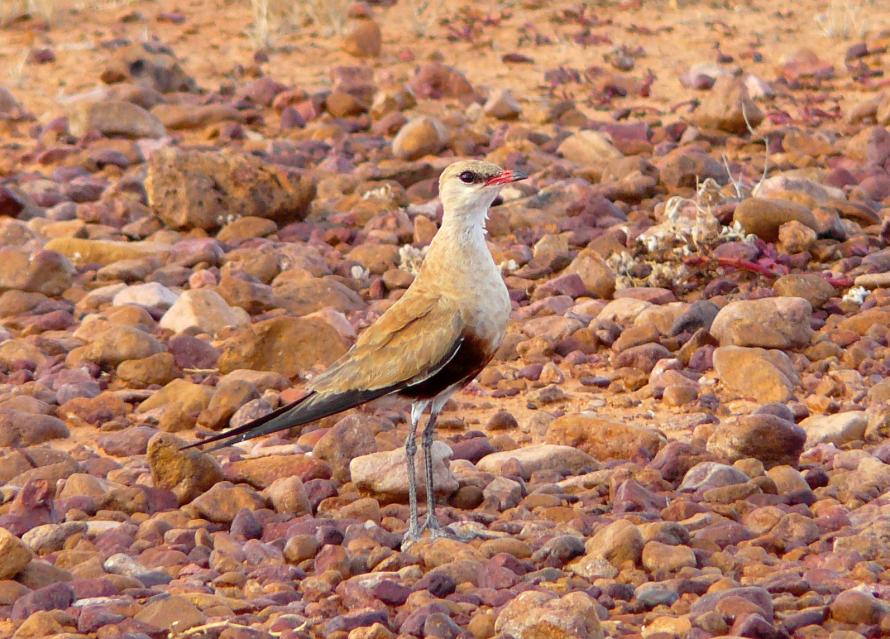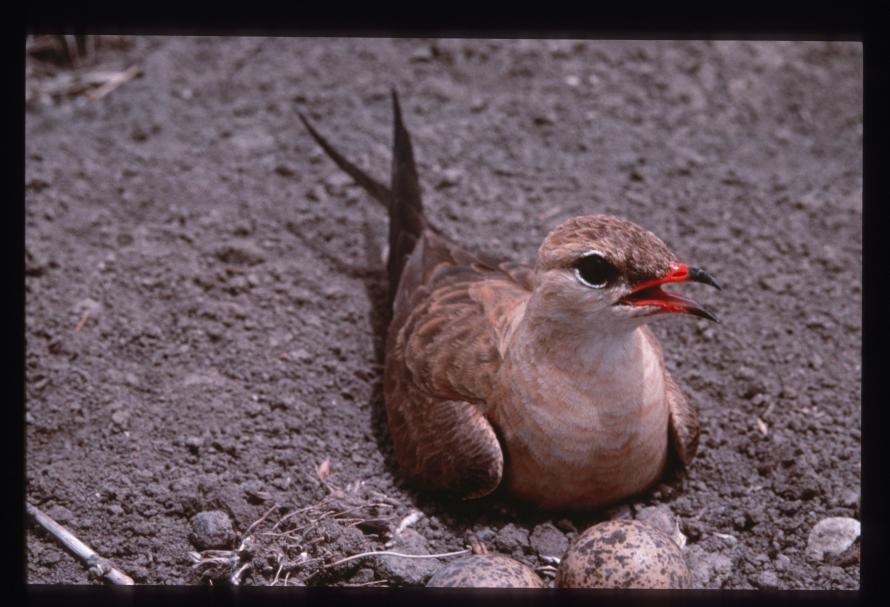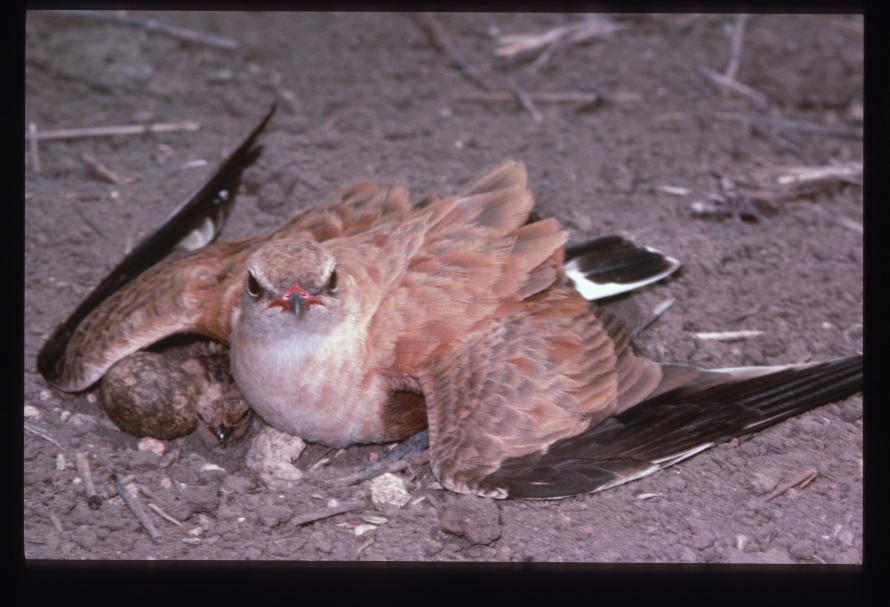


Australian Pratincole
Stiltia isabella
| Details | |
|---|---|
| Type | Bird |
| Group | |
| Biology | Clutch size is two. They are monogamous and stay together during the breeding season. Eggs are laid on bare ground in a scrape, which can be on stony ground and if the ground is soft it will make a small depression. Nest is sometimes ringed with small stones or sheep droppings, small pebbles, dry plant material or rabbit droppings. Both sexes incubate the eggs and care for the young. |
| Distinctive Markings | Long legs. Long pointed wings. Short decurved bill. |
| Taxonomy | |
|---|---|
| Phylum | Chordata |
| Class | Aves |
| Order | Charadriiformes |
| Family | Glareolidae |
| Genus | Stiltia |
| Species | isabella |
The Australian Pratincole is also known as 'Roadrunner'. On the ground, it is like a plover, running and darting along on its long legs catching insects. However, in flight it is more like a tern, flying elegantly with long, narrow wings.
| Interesting Facts | |
|---|---|
| Diet | Carnivore. Feeds on inscects, such as spiders and centipedes. It has active salt-glands, which enable it to drink both fresh and saline water. |
| Habitat | Found in open inland plains, sparsely wooded plains and tussock grasslands, and commonly found close to water. It is usually found in arid and semi-arid rainfall zones and mainly in the lowlands. |
| Native Status | Native to Australia |